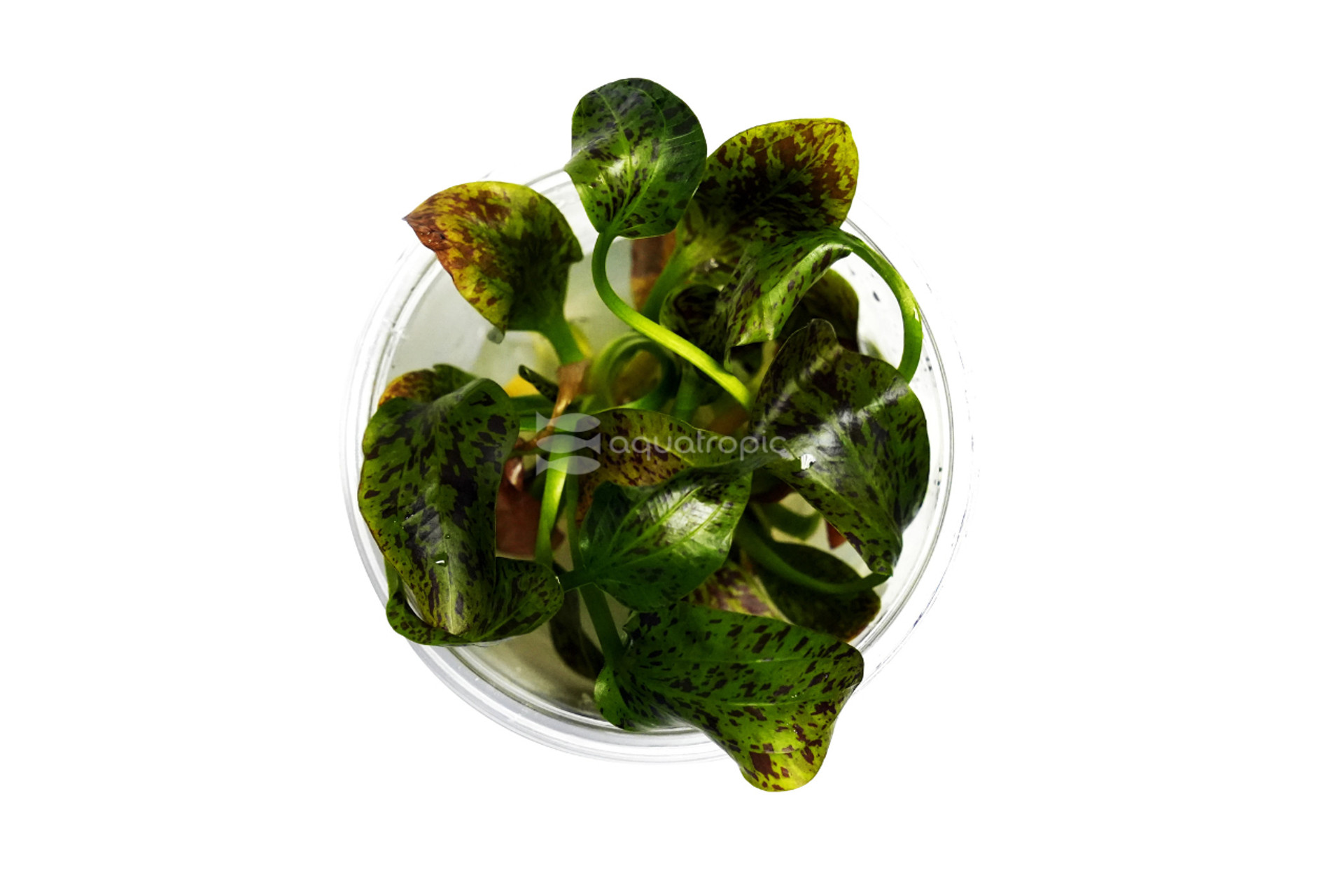Ozelot Zealots!

Echinodorus is a genus of a very popular aquatic plant for home aquariums, and you may know them better as “Sword” plants, though there are a few other groups of plants that also share this common name. Echindorus are generally undemanding, easy plants to grow with quick growth rates in ideal conditions.
Over the years, aquarium keepers and the companies that supply them with plants have hybridized some of the the species in this genus. Once such hybridization happened between E. schluteri (or Leopard) Echinodorus and E. barthii giving us a plant we call Echinodorus Ozelot. It has oblong dark spots (not unlike an Ocelot, a jungle cat of similar name) on reddish brown leaves. Further honing of this cross has also given the world a version of this plant with a green base leaf color, and somewhat obviously, we call this variant the Green Ozelot, the lighter color of these leaves makes for a starker contrast against the spots than is normal for the standard Ozelot. While the spots on this plant are darkest on the youngest leaves, they don't go away as the plant matures.
Echinodorus 'Ozelot' will get eight to twelve inches tall in a couple months with good conditions. They are described as “Rosulate” which means the leaves grow out from a central point, and when viewed from above bear a passing resemblance to an open rose. In regard to the Ozelot, this rosette can be eight to sixteen inches across depending on how you prune it back, and how well it grows in your system.
Generally, Echinodorus swords are undemanding plants that can grow in low to medium light and low or no doses of carbon dioxide. While Green Echinodorus Ozelot will do just fine in low tech planted setups (meaning lower light and no CO2), they will do better with moderate to bright light and some dosing; using at least moderate light set ups will keep new leaves regularly sprouting. Regardless of these two factors, they are heavy feeders and will grow much more quickly and fully in a nutritious substrate and you should plan for a few inches of it in your display. If you are looking for a gravel or sand look, use it to cover a more nutrient rich dirt underneath, otherwise, go for a soil specifically designed and sold for planted aquariums. Remove the Ozelots from the pot they come in before planting, and if there is any packing material around the roots, remove this too. You want as much root in as much contact with the substrate as possible.
Their size makes them good background plants in smaller to medium sized aquariums and mid ground plants for larger planted set ups. They can be fully submerged but are also capable of growing “emersed” which means the leaves can grow out of the water or lie flat on the surface of it. In this growing arrangement, some plants will produce small white flowers above the surface.
Green Ozelot can be grown in a variety of water parameters, (and lighting as we referenced earlier). A stable temperature anywhere between 70- and 85-degrees Fahrenheit is appropriate. Many sources will tell you to grow these plants in a very specific pH, but it has been our experience that anywhere from 6.0 to 8.0 will grow you a fine specimen. The general hardness is also not overly critical, and plants can thrive anywhere from soft to moderately hard water, a dGH anywhere between 4 and 12 is fine. What is key for Ozelot swords is stability; big swings in any of these parameters will have your leaves losing color and dying off in short order.
Echinodorus Ozelot will reproduce by sending outside shoots off their leaves. We recommend removing these, and they can be immediately replanted if you want to have more swords. It is easier to manage your aquascape and the spread of the plant through purposeful replanting of these shoots than it is to let them grow wherever they happen to land. If you don't want or need more Ozelots, these shoots can be given to friends or discarded.
If you're new to aquarium plants, Green Echinodorus Ozelot is a great place to start. If you aren't new to plants, this is still a gorgeous hardy plant with interesting leaves and undemanding care requirements that should have a place in the background of your planted tank. They operate on a sliding scale and will do well in low tech tanks, but can really thrive and pop in higher tech, brighter set ups. If Echinodorus Ozelot hasn't been on your list, head to your LFS and check one out, if they don't have any in stock, tell them to call us here at Aquatropic, and we can fix that problem!